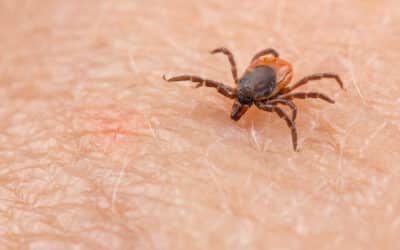
Pest Identification: Brown Stink Bug
Stink bugs, known scientifically as Pentatomidae, emit a distinctive defensive odor when disturbed, which is the basis for their name. These bugs are about ¾ inch long with a mottled grayish-brown color, six legs, and a shield-shaped body. Their foul-smelling odor is released as a defense mechanism when they feel threatened or are crushed.
As temperatures drop in early fall, stink bugs seek warm overwintering sites, often invading homes and other structures. In warmer months, they gather in large numbers on building exteriors. An adult stink bug can lay over 400 eggs, and during winter, they enter diapause, a hibernation-like state, which allows them to survive without food for extended periods.
Stink bugs have sucking mouthparts for extracting sap and juice from plants. They are not a direct threat to humans or property, but their tendency to invade homes in large numbers can be a nuisance.
Preventing infestations involves sealing potential entry points such as cracks around windows, doors, utility pipes, and chimneys with high-quality caulk. Replacing damaged screens and using yellow outdoor lighting bulbs, less attractive to stink bugs, can also help deter them. Professional pest control services, like the Fall Invader Program offered typically between August and early September, can provide specialized assistance.
Stink bugs are recognized for their unique appearance and defensive tactics. Understanding their behavior and life cycle, and implementing effective prevention measures, are key to minimizing their intrusion into homes, especially during colder months. With appropriate strategies, it's possible to coexist with these insects while reducing the inconvenience they cause.
Stink bugs are considered an Occasional Invader, the best time to treat for them is early Fall (mid-August to early September) with our Fall Invader Program. Once they get in, they are in. Please call Ford's Hometown Services for a quote.


"Very efficient, used safety practices, kept me informed, exceptional professional."
-E. Kruczek

"We are very happy & satisfied with our technician."
-D. Auger

"We are very happy with your service. We will be ongoing customers."
-B & J. Douty
The best service starts here.
We’re the most trusted pest control and lawn care company in Central Massachusetts. But don’t take our word for it. Read real reviews from happy customers. Then call us and join our growing list of residents, families, and businesses who depend on Ford’s Hometown Services to protect what matters most.
Buzzwords
Mastering Carpenter Ant Pest Control: Tips from the Experts
There are ants — and then there are carpenter ants. If you see one, you’ll know. Not only are they among the largest ants in the U.S., they can be quite destructive. Keep reading to discover important information about carpenter ants, including how to spot them, how...
Understanding Tick Behavior: Strategies for Long-Term Pest Control
Do you hate ticks? You’re not alone. A recent study by the National Pest Management Association found that 1 in 3 Americans are concerned about being bitten by bloodsucking pests like mosquitoes, ticks, and bed bugs. And for good reason — tick-borne diseases are on...
The Silent Destroyers: A Comprehensive Guide to Termite Pest Control
Everyone has heard the saying that termites have been around since the time of the dinosaurs. It’s true. Termites date back more than 120 million years! To say they are hard to kill is an understatement. That’s why taking termite pest control seriously is critical for...










